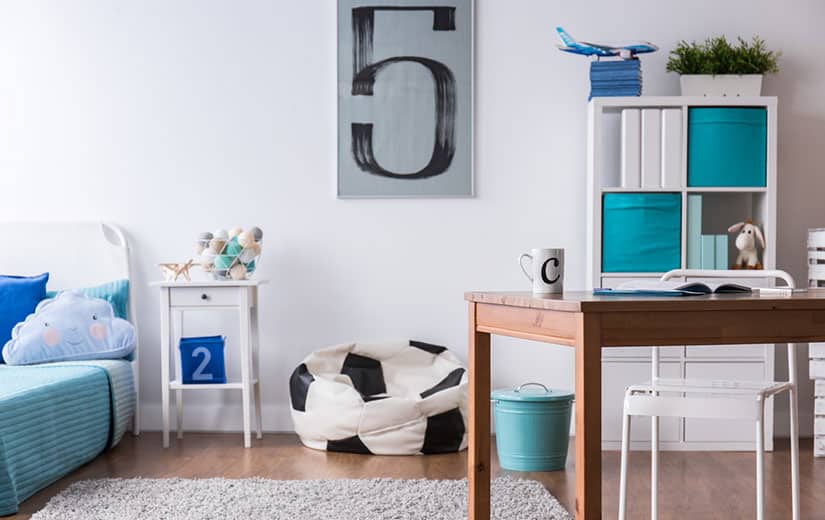When its rate is too high or too low, humidity can have serious consequences on a home and its occupants. In addition to endangering the structure of the building, it can be the cause of various health problems. In order to avoid these problems, it is therefore necessary to maintain it at an ideal level. Here are the best solutions and advice from our experts for regulate humidity in a house.
Summary
When should you regulate the humidity in a house?
There are several indicators that can help identify a humidity problem in a house or room. Depending on whether the rate is too high or too low, certain signs are usually revealing:
When the humidity is too high
Too high a humidity level in a house usually manifests itself through:
- The multiplication of unsightly stains on walls and ceilings. They are actually fungi and molds. Their presence is often accompanied by a permanent musty odor;
- Paint cracking or peeling wallpaper from the walls;
- Of the condensation on windows and other cold surfaces in the house;
- An upsurge in cases of infections or allergies linked to overgrowth of mites and other germs ;
When the humidity is too low
Too low humidity in a house can cause great discomfort for its occupants. This is usually manifested by:
- A multiplication of allergies, with eye and lung irritation. Asthma attacks are more frequent;
- Cases ofENT infections in children and adolescents;
- A high frequency of cases of tired, of headache and of dehydration ;
- Tingling in the eyes, frequent nasal congestion, chapped lips, etc.
In either of these cases, it is important to regulate the humidity in the house.
Read also: Rising water by capillarity: causes, consequences and solutions
8 effective solutions to regulate humidity in a home
Depending on the causes and manifestations of the humidity problem, several solutions are possible. Here are the most common and effective:
1. Ventilate and ventilate the house
In the simplest cases, ventilating your house well is enough to fight against too much humidity. This makes it possible to renew the air inside the rooms; especially the bathroom and the kitchen. 5 to 10 minutes of daily ventilation are recommended.
For more efficient ventilation, the installation of a VMC (Controlled Mechanical Ventilation) may be necessary. These devices make it possible to clean and evacuate the air from rooms that are too humid.
2. Make sure the air vents are clean.
Clogged air vents can be the cause of humidity problems in the home. So make sure the bathroom and kitchen areas are clean and uncluttered. If not, clean them in order to facilitate air circulation.
3. Check for leaks
The roof, walls and windows of your home must be perfectly sealed to avoid moisture problems. So make sure that the walls are not cracked and that the joints of the openings are neat. For prevent thermal energy loss, it is also recommended to opt for double-glazed windows.
4. Install a bilge pump
Placed on the wall, a drying plant is an effective solution to fight against humidity in a house. It allows the walls to be dried without damaging them.
5. Buy a dehumidifier
These are devices containing crystals that absorb ambient humidity and turn it into liquid. Returned to a tank, the latter must be emptied regularly. For optimum efficiency, it is also important to frequently replace sachets or cartridges of crystals.
6. Use charcoal
This natural solution can be very effective for regulate humidity in your home. You just need to place a few pieces of charcoal in a shoebox and put it in a corner of the room. The charcoal will naturally absorb excess moisture. However, remember to change the pieces of charcoal every week.
7. Add coarse cooking salt
Another very effective natural method for absorbing humidity in a room: coarse salt. A bit like charcoal, just drop a few spoons in a container. This can then be placed in a corner of the damp room. Note, however, that the effectiveness of this solution is limited to small spaces.
8. Indoor plants to regulate humidity in a house
Some species of houseplants naturally absorb excess moisture in the rooms they live in. Just put them in a pot or hang them from the ceiling. Among the most effective, we can notably mention:
- Boston fern;
- The spathiphyllum;
- Nepenthes;
- Tillandsia;
- The saw palmetto;
- Climbing ivy;
- Cacti;
- Orchids.
What is the ideal humidity level in a house?
In France, the recommended ideal humidity level varies between 45% and 65% for an internal temperature of 20 ° C. Since it changes depending on the climate, in winter, its optimal value varies rather between 30% and 50%.
To measure it accurately, a hygrometer is the simplest and most efficient solution. It is a device with a probe that quickly measures and analyzes the air quality in a room. Note, however, that the cheaper models are not always completely reliable. For 100% reliable measurements, do not hesitate to call a professional. You can then choose the most effective solution to regulate the humidity in your home.
Read also: How to remove humidity in a bathroom?





